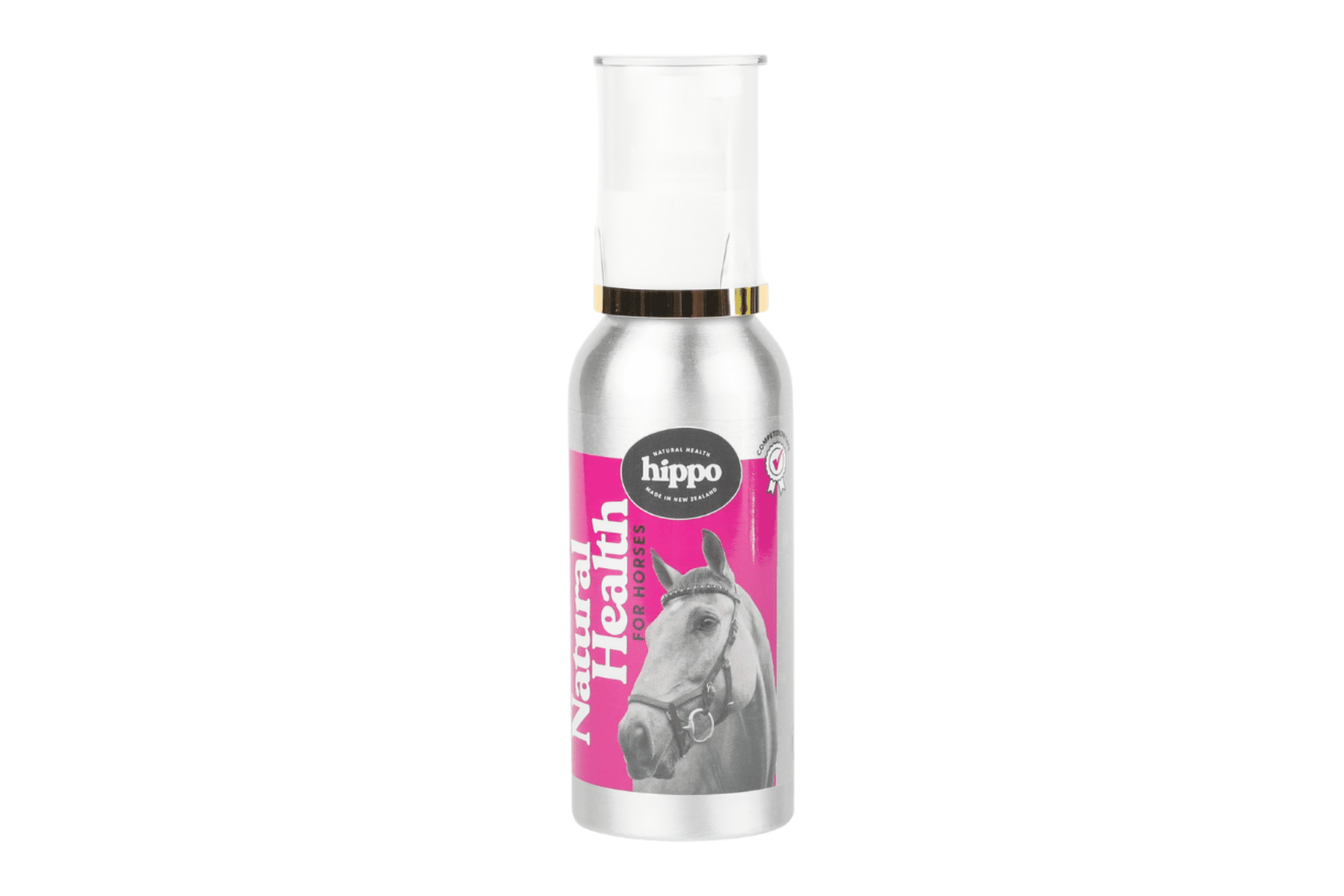Hippo Health Separation Anxiety - Equine
- Regular price
-
$56.28 - Regular price
-
- Sale price
-
$56.28
Estimated Shipping Widget will be displayed here!
Couldn't load pickup availability
* All remedies have a shelf life of 2 years
* Safe, non-toxic ingredients * Safe to use alongside prescription medications
* Competition and Racing safe (not swab-able)
* Safe for pregnant and lactating mares
* Alcohol free
More Information
If separation is occurring because of injury or rehabilitation away from the herd, the horse may need our Rehab Calm remedy which supports both the emotional and mental needs of confinement.
Oral remedies need to make contact with a mucous membrane such as the tongue, gums or lips.
General Disclaimer
Our equine remedies are formulated to support a horse’s natural immune response. We do not claim to treat, medicate or cure any health conditions. If you are worried an animal may be in pain or suffering, please contact your veterinarian.
DOSING
When To Dose
Separation Anxiety – Equine is professionally formulated to soothe an anxiety response that starts when other horses are being tacked up or prepared for travel. Start dosing as soon as the anxious horse realises they will be separated or left alone, then give a second dose just before separation happens. The effect of this remedy is cumulative, so you are likely to see improved results over 3-5 days.
How To Dose
When first using this remedy, dose twice a day for 7 days, then stop dosing and observe behaviour for the next 7 days. If symptoms are still present, repeat the 7-day dosing regimen. Once behaviour has improved, only dose on days when separation will occur. If behaviour is triggered again, start another 7-day dosing regimen.
90ml Pump Bottle Dose 2 pumps into the mouth or onto a treat twice a day for 7 days. For more nervous horses, pump a dose onto your finger and dab onto the horse’s tongue, gum or lips.
90 ml Pump Bottle = 230 doses (2 pumps per dose).
* This remedy is not suitable for adding to the water trough.
Bottles are food grade aluminium with a hygienic serum pump lid and over cap. Great for dosing on the go.
INGREDIENTS
Made in New Zealand. 100% Natural and Non-toxic. Homeopathic Preparation.
Contains equal parts of: Borax, Calc-carb, Gelsemium, Ignatia, Stramonium Base: Vegetable glycerine & purified water
Shipping Info
Shipping & Pickup Information
Flat Rate Shipping via Post Haste (Excludes Feed):
- North Island: $10 (1-2 working days)
- South Island: $20 (2-3 working days)
- Rural Surcharge: +$6 (extra time may apply)
Feed Shipping per bag via Post Haste:
- Central North Island: $14 Per Bag
- Upper North Island: $18 Per Bag
- Lower North Island: $28 Per Bag
- South Island: $55 Per Bag
- Rural Surcharge: +$6 (extra time may apply)
Orders placed before 1 PM are usually shipped the same day.
Click & Collect:
- Free 24/7 pickup via our after-hours collection box.
- Instructions will be emailed when your order is ready.
Returns & Exchanges
No problem! We offer 30-day returns and exchanges on all items in new, resalable condition with the original packaging. See our full policy.
FAQ
All your questions, answered.

The thermoneutral zone is the temperature range where the body can maintain its core temperature with little to no extra energy expenditure. For humans, this range is quite narrow at 21–28 °C, but for horses it’s much broader at 5–25 °C.
This difference means we should avoid rugging horses based on how cold we feel. Over-rugging can lead to serious health issues, including metabolic problems and thermoregulatory dysfunction.
Tips for Choosing a Winter Rug Weight
-
Clipped horses may need a heavier gram fill to stay comfortable.
-
Remember: horses warm themselves more easily than they cool down under a rug. If unsure, choose a lighter rug.
-
Check your horse regularly to make sure they are neither too hot nor too cold.
-
Consider your horse’s age and natural ability to stay warm.
-
As a general guide, rugging is usually appropriate when temperatures drop below 5–10 °C, but always adjust for your horse’s individual needs.
-
Always ensure rugs are waterproof. A wet rug is worse than no rug at all.
This is an indicative guide only. Always take into account factors such as wind chill, your horse’s age, weight, and condition.



